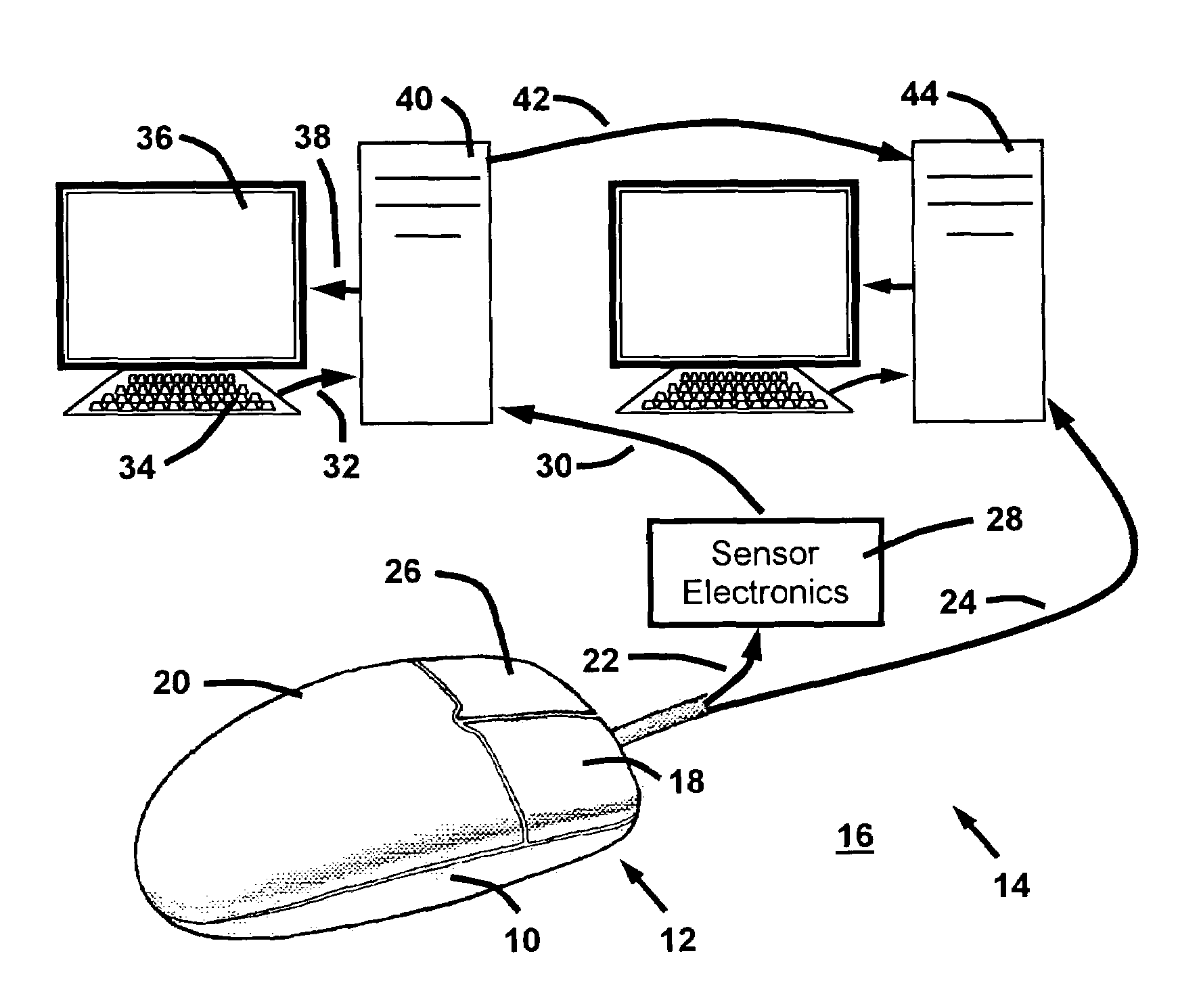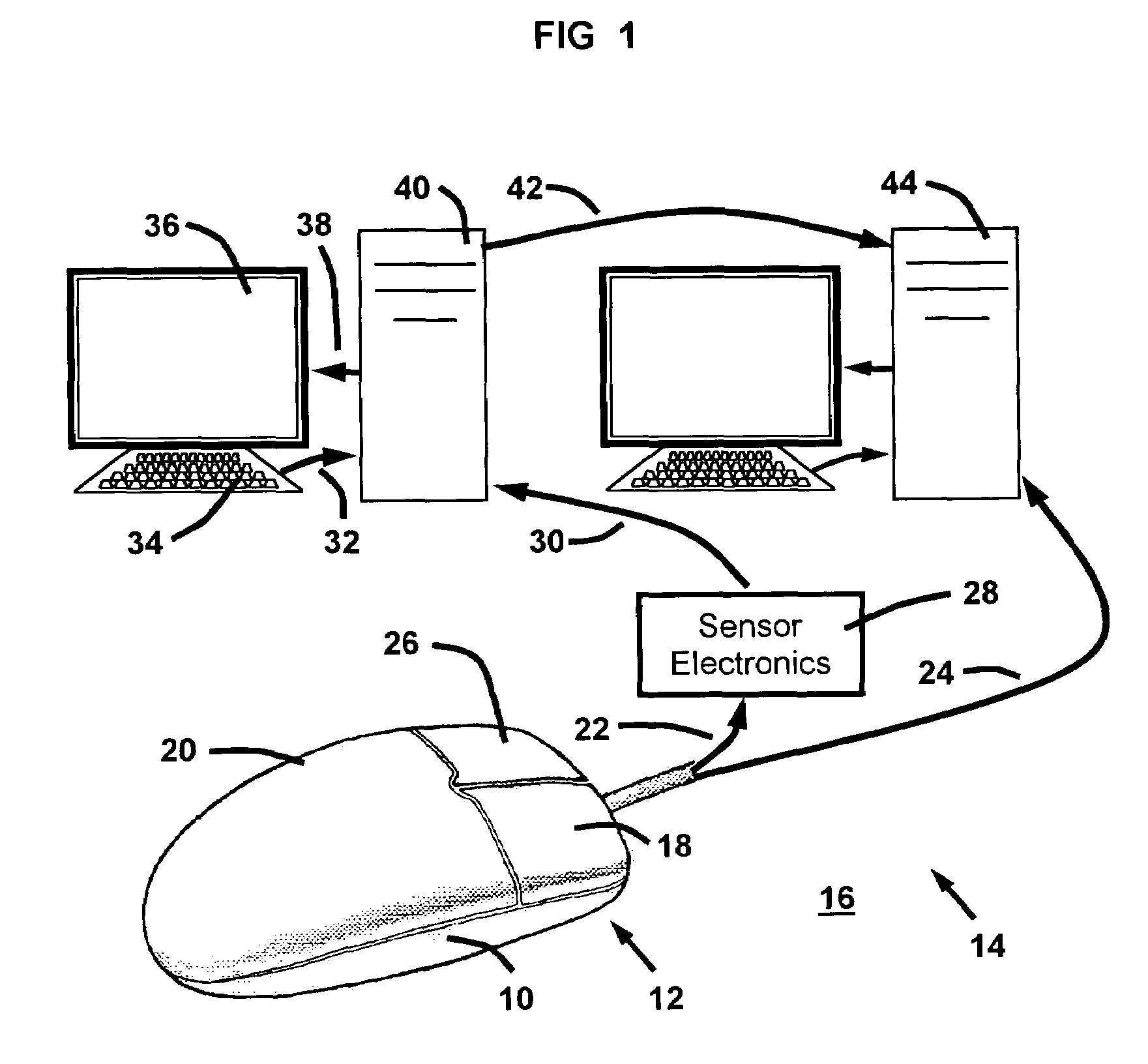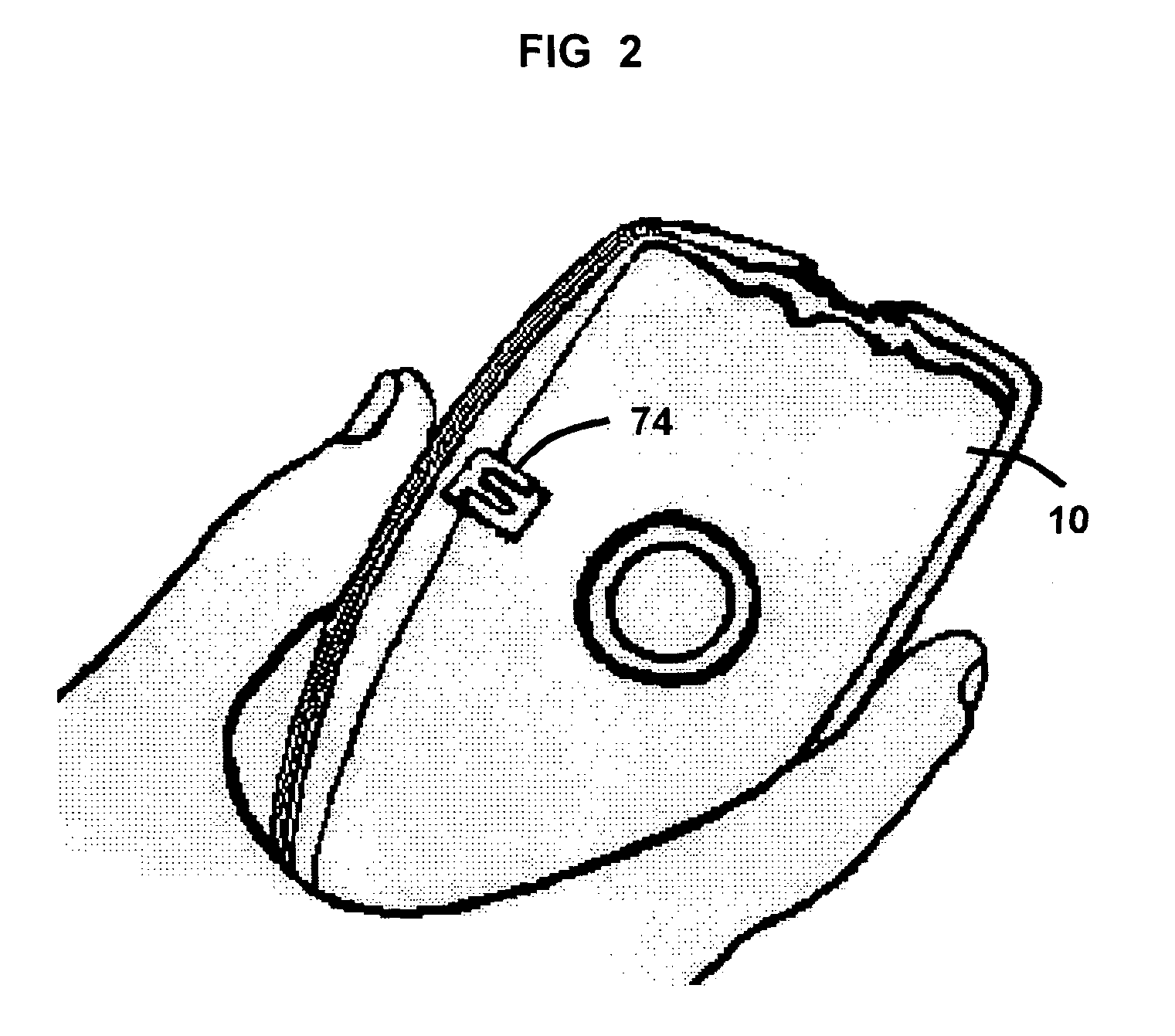Input device to continuously detect biometrics
a biometric and input device technology, applied in the field of biometric devices, can solve the problems of devices that require training, unauthorized data entry and computer operation, and yearly costs in the millions of dollars of damage and millions of person-hours to correct, so as to eliminate the need for training, eliminate the dependency on a single sensor, and achieve rapid identity authentication
- Summary
- Abstract
- Description
- Claims
- Application Information
AI Technical Summary
Benefits of technology
Problems solved by technology
Method used
Image
Examples
Embodiment Construction
[0028]Referring initially to FIG. 1, a schematic diagram is shown, generally designated the system 14, that includes two computer systems which are the authentication computer 40 and task computer 44. The task computer 44 consists of one or more input devices, such as a computer mouse 12 and a keyboard 34, to input data to the task computer 44 via mouse to computer cable 24 and keyboard to computer cable 32. The authentication computer 40 consists of one or more input devices, such as a keyboard 34, to input data to the authentication computer 40 via keyboard to computer cable 32. The authentication computer 40 also consists of a sensor electronics module 28 that receives conditions and amplifies signals from a plurality of pressure sensors in the computer mouse 12 via the mouse to electronics cable 22. The conditioned signal from the sensor electronics module 28 is sent to the authentication computer 40 via the electronics to computer cable 30. The authentication computer 40 is con...
PUM
 Login to View More
Login to View More Abstract
Description
Claims
Application Information
 Login to View More
Login to View More - R&D
- Intellectual Property
- Life Sciences
- Materials
- Tech Scout
- Unparalleled Data Quality
- Higher Quality Content
- 60% Fewer Hallucinations
Browse by: Latest US Patents, China's latest patents, Technical Efficacy Thesaurus, Application Domain, Technology Topic, Popular Technical Reports.
© 2025 PatSnap. All rights reserved.Legal|Privacy policy|Modern Slavery Act Transparency Statement|Sitemap|About US| Contact US: help@patsnap.com



